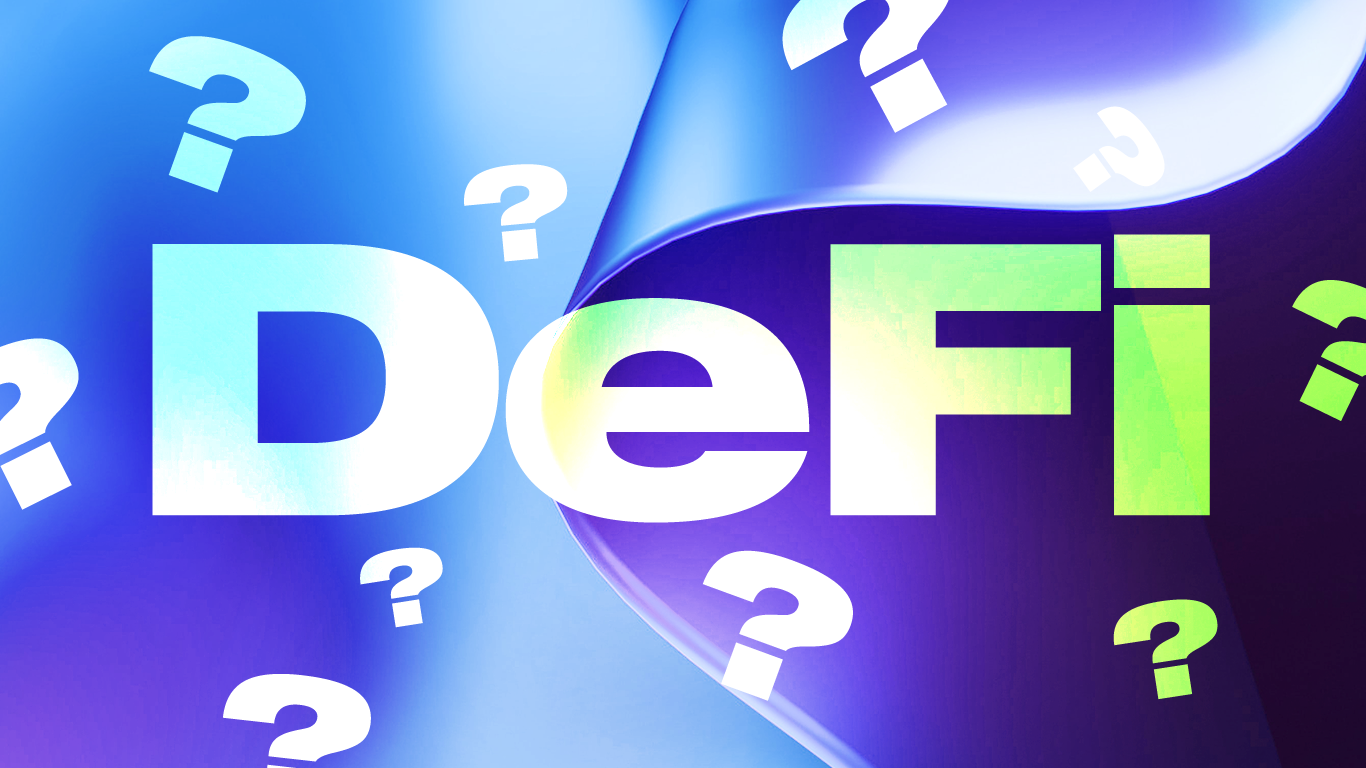Blockchain technology is quite popular for maintaining a secure and public record of cryptocurrency transactions. In recent years, developers have explored a more complex application of blockchain to the financial world, which led to the creation of decentralized finance, or as it is popularly known – DeFi.
DeFi seeks to challenge the boundaries, limitations and control of the traditional financial system using the power of blockchain. With DeFi, users can transact directly with one another, bypassing all mediators such as banks or any centralized financial institution.
This piece is curated to discuss what DeFi is about, how it works, its pros and cons and how DeFi compares to centralized finance in cryptocurrency.
What is DeFi?
Decentralized finance (DeFi) is a collective term referring to all applications of blockchain technology to provide financial services. Like traditional banking, DeFi allows you to borrow, lend, trade assets, earn interest, and much more. However, these services are conducted strictly by peer-to-peer systems requiring no paperwork or intermediaries.
DeFi is based on blockchain technology; thus, it offers fast, decentralized financial products and services globally accessible to anyone with an internet connection. As an emerging crypto sector, DeFi is currently attracting lots of interest as it wields the potential to alter banking as we know it.
How does DeFi work?
To create a fully decentralized financial system, DeFi leverages the power of blockchain, decentralized applications (dApps) and smart contracts.
All DeFi projects are decentralized applications, i.e. digital applications built to run on a blockchain. dApps can be designed for various purposes, including finance, gaming, sports and social media.
Decentralized Applications
In DeFi, decentralized applications are developed solely to provide users with trustless and permissionless financial services. Like all dApps, DeFi applications are secured by blockchain technology, which keeps an unalterable record of all user transactions.
There are various types of DeFi applications, including lending platforms, decentralized exchanges, stablecoins, prediction markets, etc. DeFi applications are freely accessible by anyone, with the only requirement being a crypto wallet.
That said, the existence of dApps and DeFi revolves around something more vital – smart contracts.
Smart Contracts
Smart contracts are the core elements of decentralized finance. They are programs stored on a blockchain and designed to automatically run when certain conditions are met. All decentralized applications are powered by these blockchain-based programs.
In DeFi, smart contracts act in place of traditional financial intermediaries, facilitating peer-to-peer transactions among users. Simply put, smart contracts are the custodians of DeFi services and are programmed to execute blockchain transactions based on a set of coded instructions. In addition, they are open-source protocols, and their code is publicly accessible and can be verified by anyone on the blockchain.
The Ethereum blockchain is the most popular platform for developing smart contracts and dApps. It is known for allowing developers to have a wide range of flexibility in building decentralized applications while ensuring optimum security.
Ethereum is home to most successful decentralized finance projects, including Uniswap, MakerDAO, Compound etc. Other credible blockchains for building dApps and DeFi solutions are Cardano, Solana, BNB Chain, and so on.
DeFi vs CeFi
In cryptocurrency, CeFi, or centralized finance, is an umbrella term that refers to all cryptocurrency transactions conducted via centralized platforms. These platforms include centralized exchanges (CEX) such as Binance and Kraken or centralized lending platforms like BlockFi and Nexo.
The aim of CeFi is to combine the benefits of DeFi with the security and simplicity of traditional financial systems. Thus, like DeFi, CeFi allows investors to lend, borrow, and trade digital assets, however, under a regulated and central system. Therefore, there are notable differences between both financial systems.
Control over financial services
For instance, DeFi platforms are decentralized and managed by their users via a decentralized autonomous organization (DAO). Through the DAO, users participate in voting sessions to make critical decisions regarding the DeFi protocol. However, CeFi platforms are run by a single authority responsible for making decisions that affect all users.
Furthermore, CeFi platforms offer little anonymity as users must provide information on their identity and complete a mandatory Know-Your-Customer (KYC) process. This is quite different from DeFi projects, in which all users remain entirely anonymous, requiring only a crypto wallet to access the needed financial services.
Custody over assets
Moreover, DeFi applications utilize non-custodial wallets, allowing their investors to have sole custody of their individual assets. However, centralized exchanges employ the use of custodial wallets, which grant them access to their investors’ assets. Custodial wallets enable these exchanges to easily send or receive payments for their users based on permission. However, they are quite risky as any attack on the exchange can lead to a loss of assets.
Onboarding with Fiat
Another difference between CeFi and DeFi comes in trading systems. In addition to Peer-to-Peer transactions, centralized exchanges offer investors the option of converting fiat currencies to cryptocurrency and vice versa. On the other hand, decentralized exchanges deal only with crypto assets via the P2P system and are incompatible with fiat/traditional currencies.
Aside from these points stated above, there are other differences between CeFi and DeFi in terms of transaction costs, cross-chain services, market hours, etc. However, it is worth stating that both systems can complement each other and are vital in driving the mainstream adoption of cryptocurrency.
Pros of DeFi
Due to its application of blockchain technology, DeFi offers a number of benefits that are not present in a fiat-based financial system. These include:
- Transparent financial transactions: All transactions on a DeFi protocol are stored on its underlying blockchain. These financial transactions are publicly accessible and can be viewed by any user.
- Permissionless and inclusive system: To access DeFi services, users only need a crypto wallet. With this wallet, anyone can use DeFi applications regardless of status or location.
- Blockchain security: All data on DeFi protocols are secured by blockchain technology. Thus, DeFi solutions are immune to data loss or manipulation.
- High-interest rates: Through yield farming, DeFi protocols allow investors to earn interest by lending or staking their cryptocurrencies. DeFi interest rates are usually much higher than what traditional banks offer.
- Full custody of digital assets: DeFi services are accessed via non-custodial wallets, which allows investors to retain sole control over their digital assets.
Cons of DeFi
Although DeFi is an interesting financial concept with several advantages, it is still worth noting that it is still a budding technology with underlying risks. Some disadvantages of DeFi include:
- Hacking: Hackers can exploit vulnerabilities in the smart contracts of any decentralized application. In situations where these bad actors are successful, they execute a heavy theft of crypto assets from DeFi platforms.
- High Collateral requirements: DeFi lending protocols usually require participants to deposit collateral assets equal to or more than the value of the requested loan in order to deal with market volatility. However, this requirement serves as a limitation in the eligibility for crypto loans.
- Volatility: When acting as a lender on DeFi solutions, it is worth noting that your crypto assets remain subject to market volatility and could lose value over time. The volatility risk applies more to crypto loans, as collateral assets could drop in value and be forcefully liquidated to settle the impending debt.
- Cost: While DeFi solutions have no hidden charges like fiat-based systems, users still pay transaction fees known as “gas fees.” Depending on the blockchain and transaction process, gas fees could cost as high as hundreds of dollars.
- Scam projects: As DeFi is an unregulated sector, there are several projects in the space set up to lure amateur investors into losing their assets.
Frequently Asked Questions
What is the goal of DeFi?
The goal of decentralized finance (DeFi) is to provide financial services that require no third-party using decentralized technology.
What are the top DeFi projects?
The top DeFi projects include Uniswap, Maker, Compound, SushiSwap, Aave, etc.
How many DeFi protocols are there?
According to DeFi Prime, a credible DeFi analytics website, there are currently 224 DeFi protocols, 191 of which run on the Ethereum blockchain.
Wrap Up
It goes without saying that decentralized finance is a novel blockchain application with a massive potential to go mainstream in the coming years. However, while DeFi is currently a thriving sector, interested investors should always consider the risks associated with this blockchain-based financial technology. It is advisable to approach each DeFi project only after conducting the necessary research.








